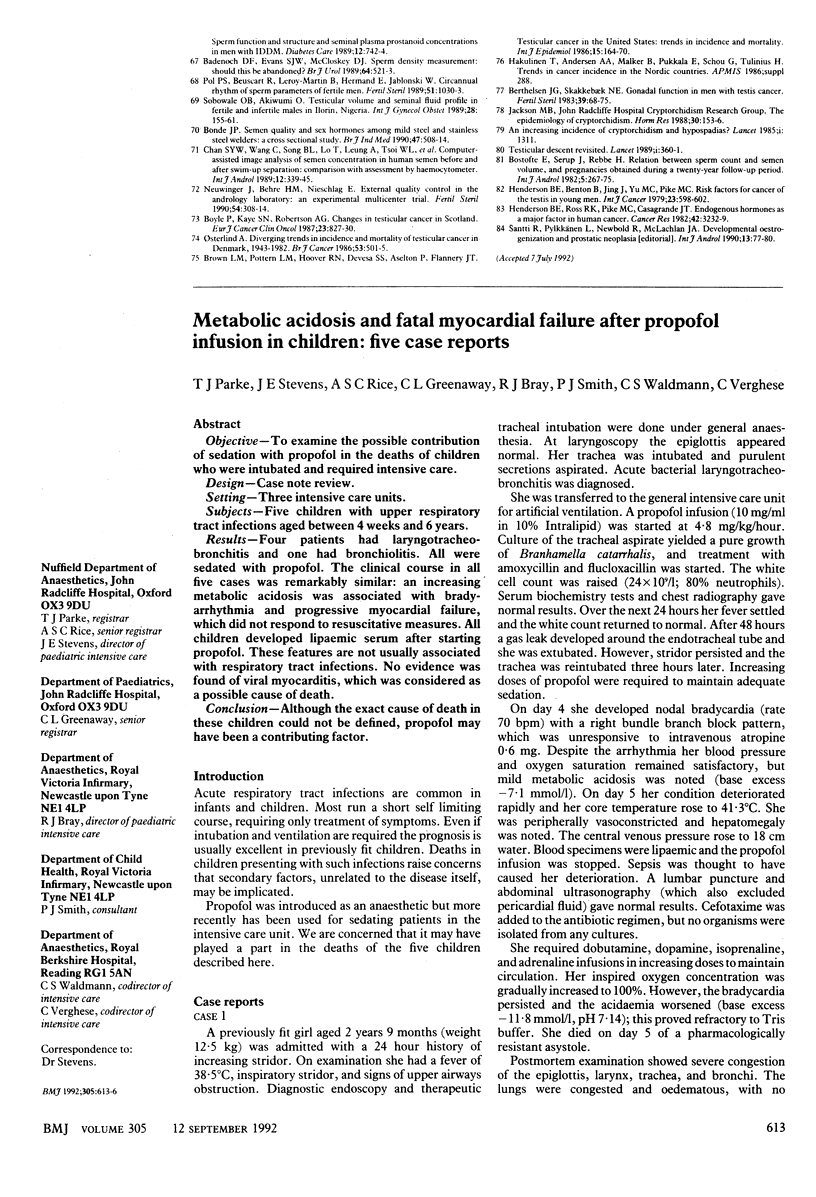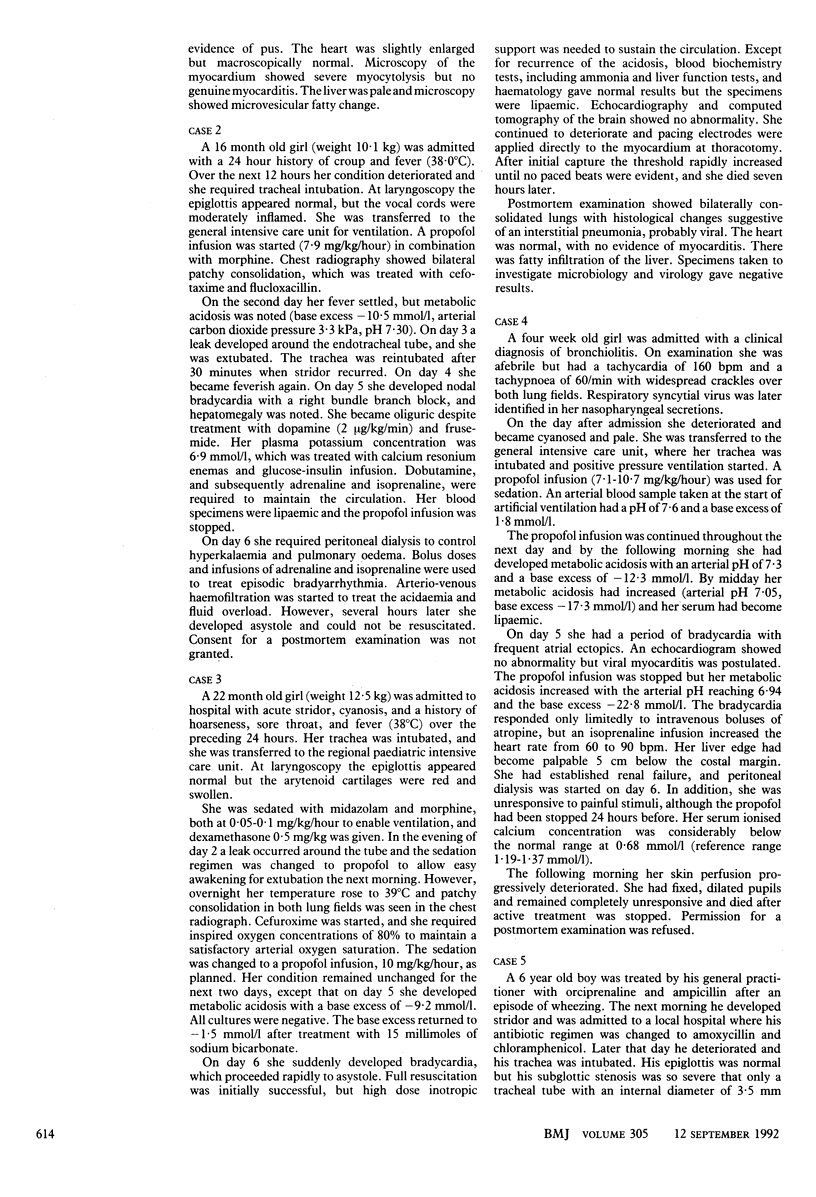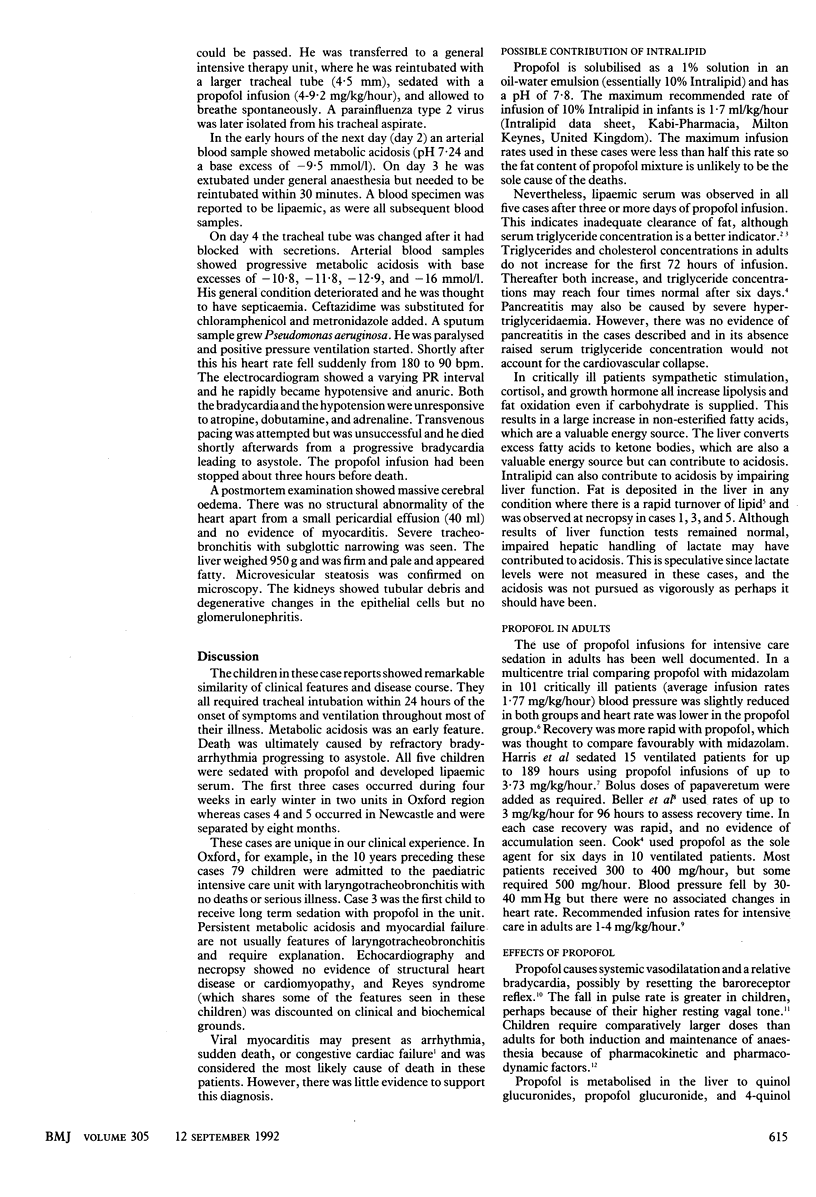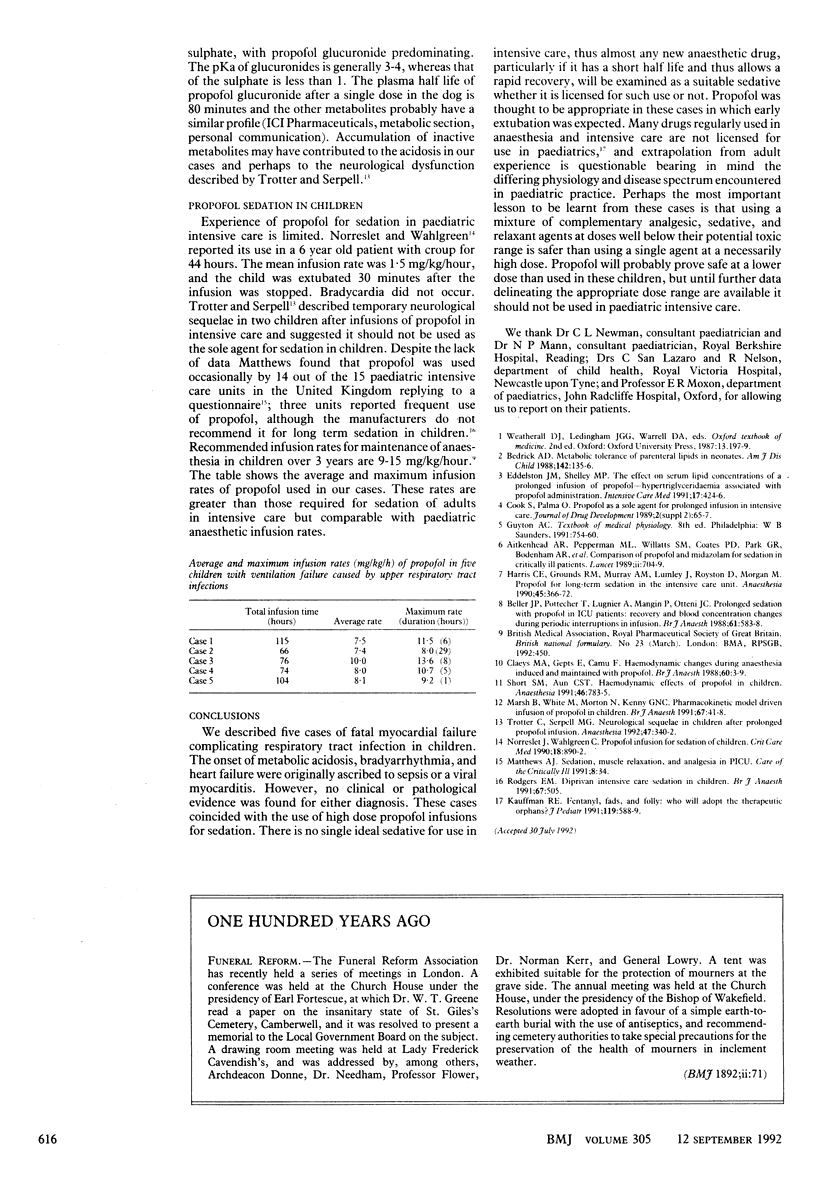Abstract
OBJECTIVE--To examine the possible contribution of sedation with propofol in the deaths of children who were intubated and required intensive care. DESIGN--Case note review. SETTING--Three intensive care units. SUBJECTS--Five children with upper respiratory tract infections aged between 4 weeks and 6 years. RESULTS--Four patients had laryngotracheo-bronchitis and one had bronchiolitis. All were sedated with propofol. The clinical course in all five cases was remarkably similar: an increasing metabolic acidosis was associated with brady-arrhythmia and progressive myocardial failure, which did not respond to resuscitative measures. All children developed lipaemic serum after starting propofol. These features are not usually associated with respiratory tract infections. No evidence was found of viral myocarditis, which was considered as a possible cause of death. CONCLUSION--Although the exact cause of death in these children could not be defined, propofol may have been a contributing factor.
Full text
PDF



Selected References
These references are in PubMed. This may not be the complete list of references from this article.
- Aitkenhead A. R., Pepperman M. L., Willatts S. M., Coates P. D., Park G. R., Bodenham A. R., Collins C. H., Smith M. B., Ledingham I. M., Wallace P. G. Comparison of propofol and midazolam for sedation in critically ill patients. Lancet. 1989 Sep 23;2(8665):704–709. doi: 10.1016/s0140-6736(89)90770-8. [DOI] [PubMed] [Google Scholar]
- Bedrick A. D. Metabolic tolerance of parenteral lipid in neonates. Better late than never. Am J Dis Child. 1988 Feb;142(2):135–136. doi: 10.1001/archpedi.1988.02150020033021. [DOI] [PubMed] [Google Scholar]
- Beller J. P., Pottecher T., Lugnier A., Mangin P., Otteni J. C. Prolonged sedation with propofol in ICU patients: recovery and blood concentration changes during periodic interruptions in infusion. Br J Anaesth. 1988 Nov;61(5):583–588. doi: 10.1093/bja/61.5.583. [DOI] [PubMed] [Google Scholar]
- Eddleston J. M., Shelly M. P. The effect on serum lipid concentrations of a prolonged infusion of propofol--hypertriglyceridaemia associated with propofol administration. Intensive Care Med. 1991;17(7):424–426. doi: 10.1007/BF01720682. [DOI] [PubMed] [Google Scholar]
- Harris C. E., Grounds R. M., Murray A. M., Lumley J., Royston D., Morgan M. Propofol for long-term sedation in the intensive care unit. A comparison with papaveretum and midazolam. Anaesthesia. 1990 May;45(5):366–372. doi: 10.1111/j.1365-2044.1990.tb14777.x. [DOI] [PubMed] [Google Scholar]
- Kauffman R. E. Fentanyl, fads, and folly: who will adopt the therapeutic orphans? J Pediatr. 1991 Oct;119(4):588–589. doi: 10.1016/s0022-3476(05)82409-6. [DOI] [PubMed] [Google Scholar]
- Marsh B., White M., Morton N., Kenny G. N. Pharmacokinetic model driven infusion of propofol in children. Br J Anaesth. 1991 Jul;67(1):41–48. doi: 10.1093/bja/67.1.41. [DOI] [PubMed] [Google Scholar]
- Short S. M., Aun C. S. Haemodynamic effects of propofol in children. Anaesthesia. 1991 Sep;46(9):783–785. doi: 10.1111/j.1365-2044.1991.tb09781.x. [DOI] [PubMed] [Google Scholar]
- Trotter C., Serpell M. G. Neurological sequelae in children after prolonged propofol infusion. Anaesthesia. 1992 Apr;47(4):340–342. doi: 10.1111/j.1365-2044.1992.tb02178.x. [DOI] [PubMed] [Google Scholar]


